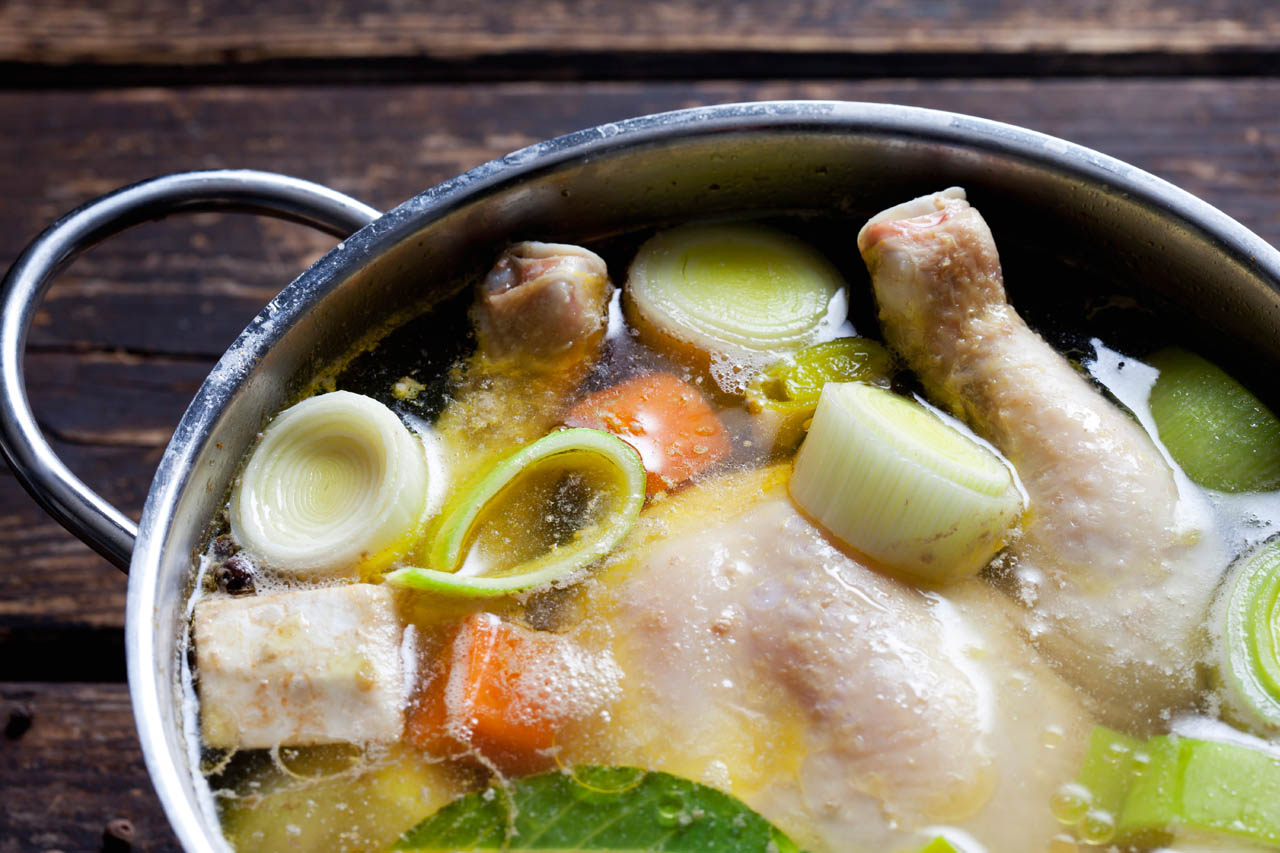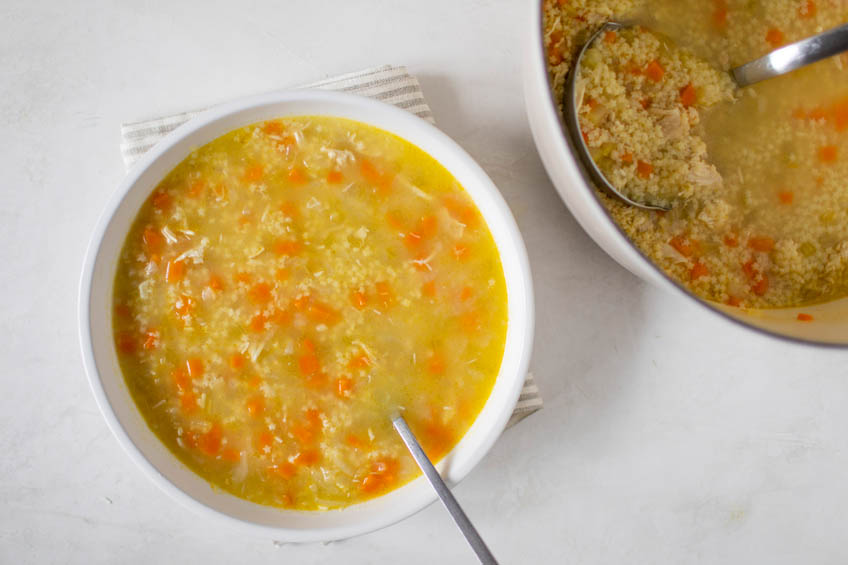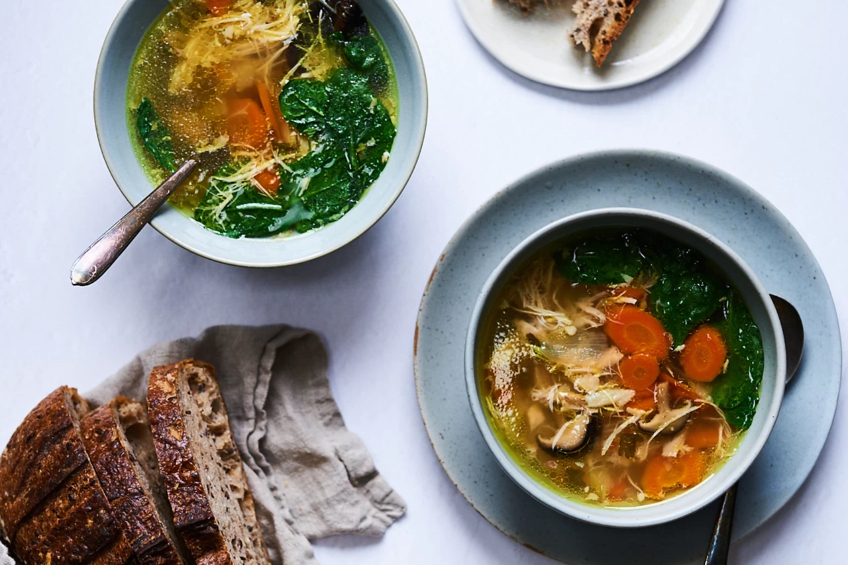
From creamy risottos to comforting sauces, broth, stock and bouillon are pantry staples for preparing some of our favourite cold-weather recipes. Beyond serving as a liquid base, these ingredients add a subtle element of flavour to your dish without overpowering your chosen seasonings. Given their similar culinary applications, you might wonder: are broth, stock and bouillon essentially all the same thing? Or is it better to choose one over the others when making a particular recipe?
Related: The Ultimate Guide to Buying the Best Olive Oil
What is the difference between bouillon and broth?
Let’s start with the simplest of the trio to distinguish: bouillon and broth. ‘Bouillon,’ which is the French word for ‘broth,’ is used to describe broth that has been dehydrated into a powder or cube.
What is bouillon?
Bouillon is typically used as a time-saving substitute for a made-from-scratch liquid broth. The flavour of bouillon can vary significantly depending on the composition of its dehydrated base, which can include meats like chicken, beef or lamb as well as veggies. Bouillon can also be seasoned with a wide variety of spices and herbs.
One bouillon cube or a teaspoon of bouillon powder can be dissolved in one cup of boiling water to make one cup of broth. You can also melt bouillon cubes or powder directly into soups, stews, sauces and curries to enhance their flavour and create a thicker consistency. Some chefs also like to use bouillon powder (or grated bouillon cubes) as a seasoning salt, sprinkling it over foods to add a boost of umami-driven flavour.

Get the recipe: Pastina Soup
What is the difference between broth and stock?
The terminology gets a little more blurry when it comes to stock versus broth, with some chefs using the words interchangeably or defining them slightly differently. ‘Stock’ and ‘broth’ both refer to liquid that has been simmered slowly with meat and veggies. The distinction between the two can generally be made based on whether bones and seasoning are also added to the liquid.
Related: This Taiwanese Beef Noodle Soup is Brothy, Slurpy Perfection
What is broth?
Most chefs agree that seasoning is one of the key differences between broth and stock. The addition of seasoning makes broth flavourful enough to sip solo. Many of us know the soothing feeling of warm broth slurped straight from a mug when nursing a cold or flu. Stock, by contrast, has a more neutral taste and isn’t often consumed on its own.
Although broth can be enjoyed by itself, you can also use it in cooking. Broth typically has a lighter consistency than stock, making it an ideal base for deliberately simple dishes like chicken noodle soup, as well as for meals that already have plenty of body like risotto, stuffing or casseroles.

Get the recipe: Immune-Boosting Chicken Soup
What is stock?
Stock is traditionally made by simmering liquid with bones, such as chicken, beef, pork or fish. The bones release collagen and marrow into the liquid, giving stock a heartier consistency than broth. Stock is also cooked for longer than broth to give the bones and cartilage time to break down. In recipes, you’ll usually see stock used to create a richer mouthfeel, such as in sauces, gravies and stews.
You can think of stock as the best choice for texture and broth as your go-to for flavour, but this is a loose rule with many exceptions. For example, some chefs choose to add seasonings, mirepoix or other aromatic ingredients to their stock in order to give it more flavour.
Although broth, stock and bouillon are not exactly the same, they can generally be used interchangeably in cooking. If you have the option, go for broth or bouillon when the flavour of the liquid is a key element of your recipe, and reach for stock to add new depths to a well-seasoned dish.
Read more: The Ultimate Guide to Marinating
